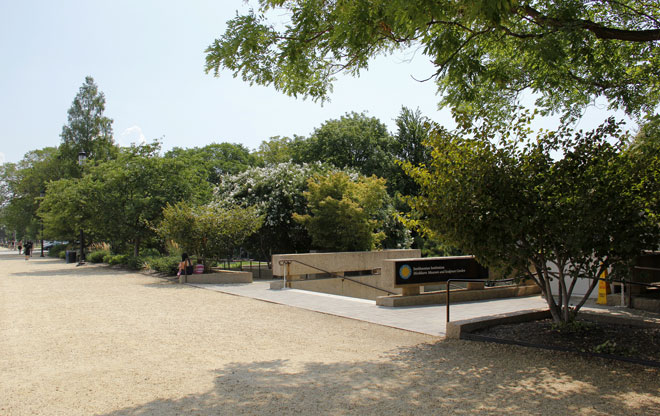
A Lush, Verdant Retreat
The Hirshhorn sculpture garden is a quiet and memorable cultural jewel connected directly to the central axis of the National Mall. The garden is bordered by a rich tapestry of planting that spills out over the walking paths and hints at a lush, verdant retreat screened from the noise and crush of the city.
Image: OLIN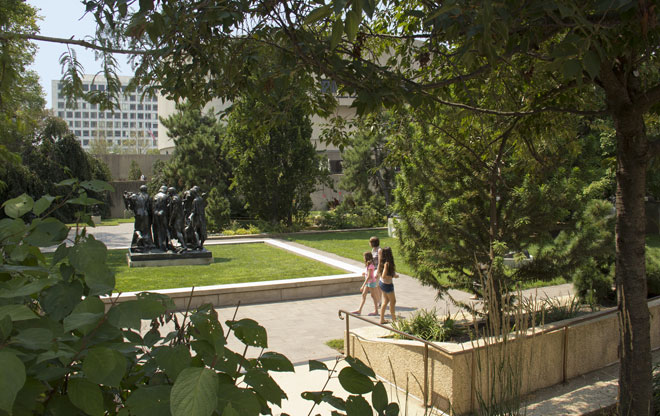
A Garden Room
Visitors to the Mall can catch glimpses of crisp green lawns and sculptures that invite further exploration into the garden. The Hirshhorn Sculpture Garden is set below the level of the Mall, providing a serene setting to focus on various works of art. Here, a cast of Auguste Rodin’s The Burghers of Calais, set on a green podium, serves as the main focal point of this garden room.
Image: OLIN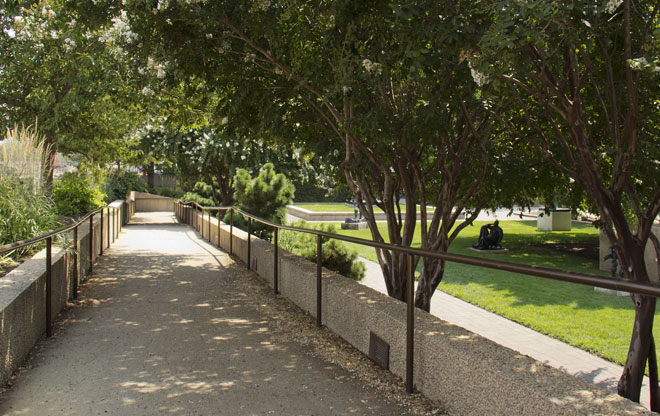
Long Views
Visitors descend from the Mall into the sculpture garden by a set of steps or two long ramps. The ramps are framed with crape myrtles, which form a flowering canopy overhead. The ramps and plantings provide long views of the sculptures and are the first in a series of level changes that create the variety of garden rooms.
Image: OLIN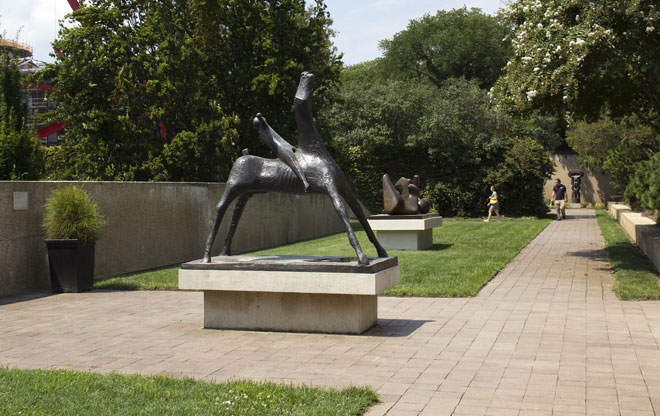
Stages for the Art Work
Within the garden, the paths and plantings provide a variety of “stages” and rooms for the individual works of art. The vegetation forming these garden rooms creates anticipation then gradually reveals the sculptures as visitors traverse the garden. This allows each piece to be viewed individually and makes the garden appear much larger than it is, as the entire site cannot be seen in one glance.
Image: OLIN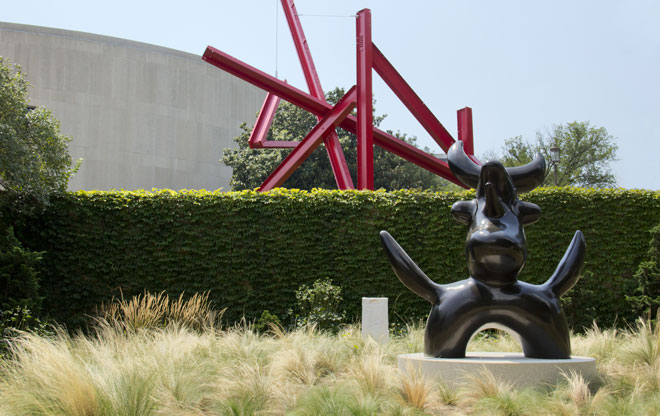
Plantings Complement and Enhance
The plantings have been carefully designed to provide a variety of colors and textures to complement and enhance the settings for each sculpture. The loose flowing texture and light color of the feather grasses accentuate the strong dark form of Lunar Bird. The dark background vegetation on the wall further highlights the sculpture and reduces the visual impact of the enormous Are Years What? beyond.
Image: OLIN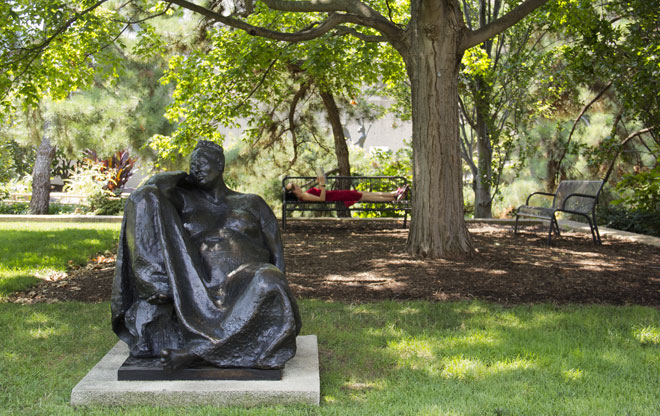
A Tranquil Space
The Hirshhorn Sculpture Garden creates a tranquil and intimate space for viewing works of art and as a respite from the noisy, bustling Mall landscape. Visitors can relax in the shade next to Seated Yucatan Woman to escape the summer heat and view the eastern garden room and sculptures.
Image: OLIN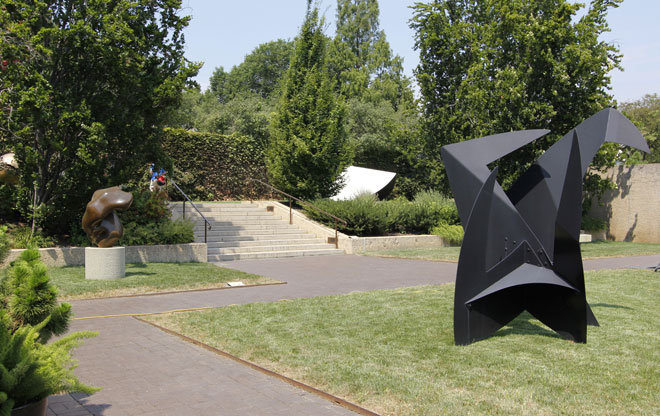
The Central Garden Room
The sculpture garden culminates in a central space located nearly eighteen feet below the level of the Mall. Ambient traffic noise is almost non-existent and a serene pool of water reflects the sky, sculptures, and surrounding trees, creating a calming atmosphere. In the central garden room, trees form sculptural elements, contrasting and softening the surrounding walls and creating a dialogue with the art pieces in the rest of the garden.
Image: OLIN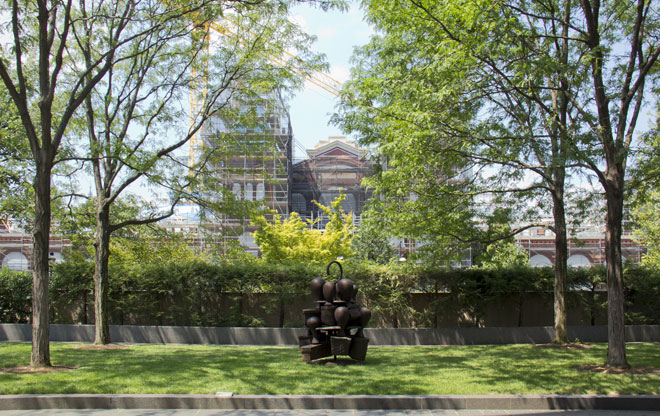
Landscape Settings for the Sculptures
Around the museum building plaza, an array of six garden rooms provides a variety of landscape settings for the different sculptural pieces. The plantings provide shady and sunny conditions and act as a subtle frame or powerful central object as appropriate to complement each particular work of art. The light canopy of honey locusts provides a “roof” and dappled sunlight for Subcommittee by Tony Cragg.
Image: OLIN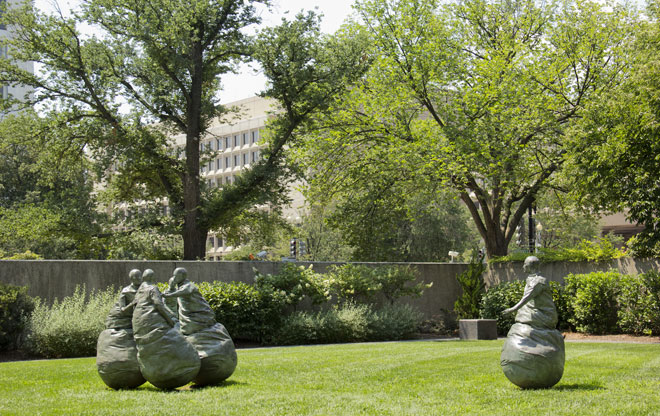
Last Conversation Piece
The sunny southwest garden room of the plaza provides a lively setting for Last Conversation Piece by Juan Muñoz. The five figures appear highly animated and dynamic and the clean lawn panel heightens this sense of imminent movement, allowing visitors to freely interact with each piece and the ensemble. A variety of planting textures softens the massive perimeter wall around the Hirshhorn plaza.
Image: OLIN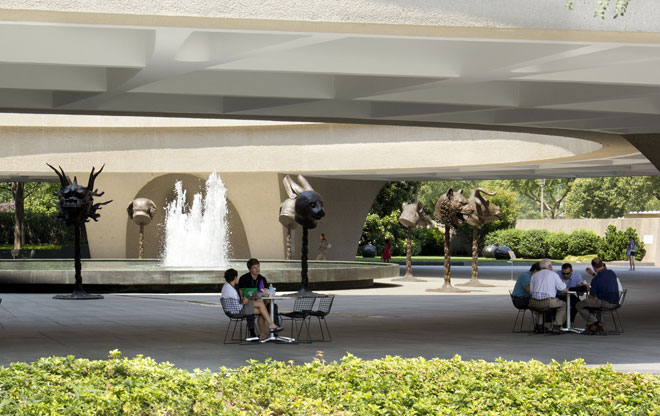
Building and Garden Contrast
The powerful form of the museum building appears to float over the plaza and provided a shady retreat for sitting and dining out of the hot summer sun of Washington, D.C. The central fountain jets and pool create a strong focal point and enhance cooling breezes under the sculptural ceiling of the museum. The colors of the surrounding gardens are accentuated by the contrast with the cool whites and grays of the concrete and granite.
Image: OLIN